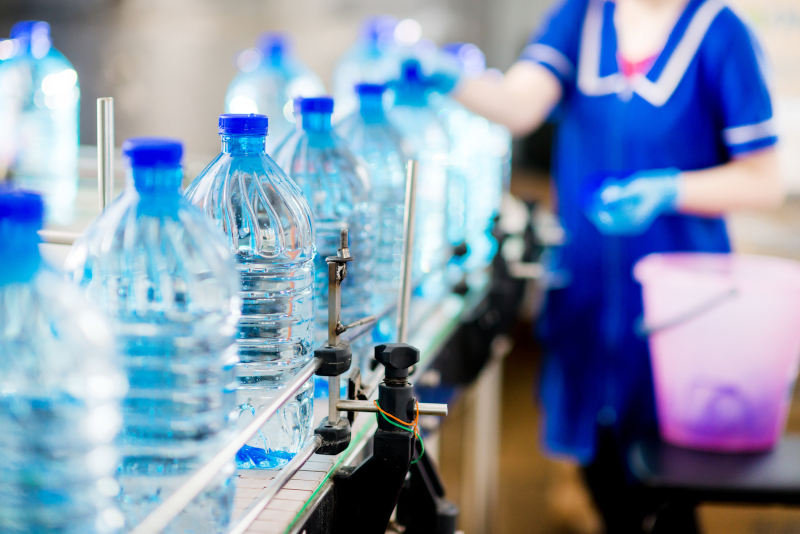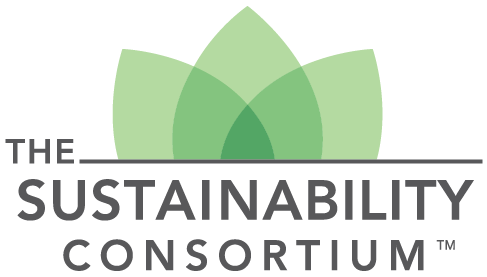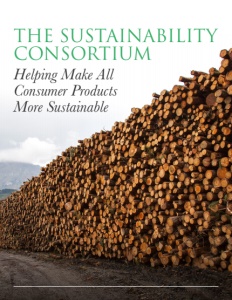By Dr. Kevin Dooley, Chief Scientist at The Sustainability Consortium, Distinguished Professor of Supply Chain Management, Arizona State University
The Sustainability Price-Tag of Consumer Goods
Consumer goods bring significant benefits to society. From soap that prevents diseases to the packaging that preserves our food to the electronics that are transforming our daily lives, consumer goods bring both comfort and enjoyment to us. Through improved production methods that reduce costs, the penetration of consumer goods now reaches well beyond the middle class and has accelerated rapidly. The question is: What are the environmental and social costs that arise within our world so influenced by consumer goods?
Consumer products are produced and sold by a supply chain of organizations. For example, mobile phones are made by a supply chain consisting in part of mining companies, plastics manufacturers, electronics parts manufacturers, phone assemblers, packaging suppliers, transportation and logistics companies, retailers, and service providers. While the physical activities performed by these organizations add value to the final product, they also create impacts on the environment and people. Energy, water, and resources are consumed in production, and some activities may contribute to pollution, threaten ecosystems, or impact humans in negative ways.
Climate change, water scarcity, and biodiversity loss are major environmental challenges that society must address, and consumer goods are a key lever. Global production and use of consumer goods accounts for more than 60 percent of all greenhouse gas emissions[1], 80 percent of water usage[2] (mostly due to agriculture), and two-thirds of tropical forest loss globally[3]. A sustainable world requires sustainable production and consumption. Incentivizing and supporting manufacturers and their suppliers to adopt new methods and design more sustainable products is one of our biggest levers for driving sustainability globally.
Addressing the sustainability price tag of consumer goods doesn’t have to raise the actual price tag of those products. Improving sustainability can reduce systemic costs and expected costs due to supply chain risks and increases revenue and growth by opening new markets for greener, better, and more innovative products. In a recent study by New York University[4] it was found that “50% of the consumer-packaged goods sector’s growth from 2013 to 2018 came from sustainability-marketed products… Products that had a sustainability claim on-pack accounted for 16.6% of the market in 2018, up from 14.3% in 2013, and delivered nearly $114 billion in sales, up 29% from 2013.”[5]

Dr. Kevin Dooley
THESIS: A Market Mechanism Driving Change
There are two basic ways in which corporate practices change. First, companies can be forced to change practice by government regulations. Sustainability regulations generally attempt to protect against air, water, and land pollution, and reduce risks related to human safety. Regulations can be useful in that they protect the environment and society from the worst performers.
The second way in which corporate change occurs is by companies voluntarily changing their practices. When a manufacturer, retailer, or consumer uses their purchasing power to influence or select supplies or products with better sustainability attributes, they are engaging market rather than regulatory mechanisms. Market mechanisms have the benefit of encouraging leadership in meeting market demands, and generally operate with lower costs than regulatory mechanisms.
To create a scalable, science-based system that could support market mechanisms driving supply chain sustainability, Walmart created the Walmart Sustainability Index in 2015. The Index is now known as the THESIS Index and is managed by The Sustainability Consortium and powered by SupplyShift. THESIS is the independent, science-based, holistic sustainability performance solution that allows companies to understand and then tell the sustainability story of their products. THESIS on SupplyShift enables these users to select assessments most appropriate for their products and then simultaneously share their results with all participating retailers.
What Do THESIS Results Tell Us about Current State of Sustainable Practices?
Even through a global pandemic, over 1700 manufacturers representing almost $1 trillion of consumer products annual sales performed a THESIS assessment powered by SupplyShift in 2020.
From 2016 to 2020, product manufacturers’ THESIS scores have improved (relatively) 38%, from 32.5% to 45% (where 100% equals the maximum score). This is an indication that the systems and processes put in place to respond to THESIS KPIs are creating positive changes in the manufacturer’s practices and its supply chain, leading to an overall improvement in scores. Scores improved in 2020 after largely remaining the same between 2018 and 2019, indicating that companies pursued sustainability improvements even during the challenges of the 2020 global pandemic.
Across these years, we have observed particularly large increases in many product categories in measurement of greenhouse gases, water use intensity, air quality, and worker health and safety, and management systems to manage biodiversity in sourcing. Some areas that still have relatively low scores across many manufacturers includes packaging sustainability, managing deforestation risks in complex food supply chains, and managing end-of-life and product takeback in durable goods (outside of the electronics sector, which is a leader here).

What Can You Do?
Every company, large or small, can be a sustainability leader in its market. A business’s need to act on sustainability is related to the expected costs and revenues associated with acting versus continuing with existing practices and processes. Voluntary adoption of new practices requires a business case to act.
The most common costs and revenue impacts from sustainability improvements are:
- Reduction of operating costs
- Improve worker productivity
- Reduced regulatory and reputational risks
- Reduced supply risks
- Increased product or service revenue
- Increased external investment
Given the broad array of issues that a company could pay attention to and act on, it should perform an assessment to determine which issues are most relevant to act on. This materiality assessment involves these steps:
- Identify the environmental and social responsibility issues to consider.
- Assess the importance of these issues to business success.
- Assess the importance of these issues to relevant stakeholders.
- Choose to focus on issues that are both important to business success and to stakeholders.
After a company determines what it wants to act on, it must create improvement options – typically in the form of projects – and then perform cost-benefit analyses to determine which option, if any, is most viable. As discussed above, sometimes costs avoided or revenue opportunities can be quantified. In other cases where an action leads to a risk reduction, cost-benefit analyses may also have a qualitative component.
Summary
Most businesses face risks in their own operations or in their supply chain in one or more of these areas: resource depletion, pollution, climate change, worker health and safety, labor rights, or diversity and equality. Sustainability projects are selected based on their ability to address these issues while reducing costs, reducing risks, increasing revenue, or increasing external investment.
A company should perform materiality assessment to determine which of these risks or opportunities are most relevant to its business success and to its key stakeholders. Companies face additional challenges when addressing these issues within their supply chain. Buying organizations must help create both the incentive and capability for suppliers to change their current practices to more sustainable ones.
[1] The Sustainability Consortium (2017), Greening Global Supply Chains: From Blind Spots to Hot Spots to Action, link. Similar estimate derived from Jones, C., & Kammen, D. (2011), “Quantifying carbon footprint reduction opportunities for U.S. households and communities,” Environmental Science & Technology, 45: 4088–4095.
3 United Nations Food and Agriculture Organization, link.
[4] Kronthal-Sacco, R., and Whelan, T. (2019), Sustainable Share Index™: Research on IRI Purchasing Data (2013
-2018), New York University, link.
[5] Whelan, T., and Kronthal-Sacco, R. (2019), “Research: Actually, consumers do buy sustainable products,” Harvard Business Review, June 2019.



